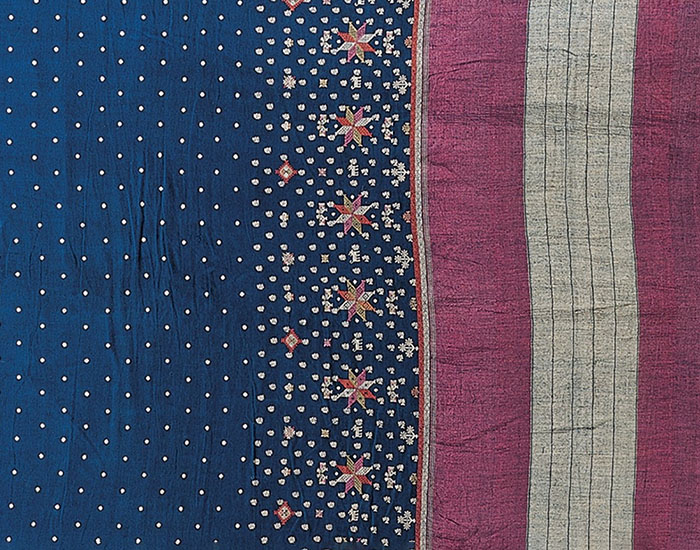Encyclopedia of Art > Articles
Kashidakari Embroidery

An umbrella term for embroidery traditions which originate in Kashmir and are executed with an aari, kashidakari is often also referred to as crewel embroidery. The various types of kashidakari include sozni, kani, amli, rezkar, tilla and dori, all of which have unique characteristics and applications while also sharing many elements of the embroidery process, materials and design. The embroidery is applied to a variety of garments, but particularly to pashmina shawls and namda blankets. Common motifs in kashidakari include butas, lotuses, cypress trees, Chinar leaves, butterflies native to Kashmir and birds like parrots and magpies. Human forms are generally absent, although in rare cases, hunting scenes were embroidered on commissioned pieces during the medieval and early modern period.
In Kashmir, kashidakari embroidery is traditionally practised by men and the knowledge and skills are handed down from father to son. The fabric to be embroidered is placed under a perforated sheet on which the intended design is drawn with coloured powder or charcoal by the designer or naqshband. The sheet is lifted and the outline of the design is drawn by hand around the powder marks. The embroiderer – in the case of kashidakari this is usually the same person as the naqshband – uses an ari needle to execute the motifs in the fibre or zari yarn, after which the markings are washed off.
First Published:
Last Updated: July 26, 2023

